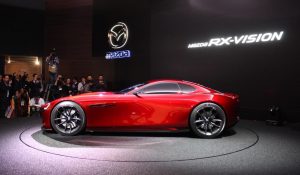By Matt Wolfe
It is a rare occurrence in the tightly regulated and highly competitive environment that is the auto industry for a concept to be perpetually abandoned and reincarnated. Often when a vehicle, technology, or brand fails, it is left for dead and the industry moves along. This phenomenon makes the rotary’s lifecycle of repeated successes and failures a remarkable feat.
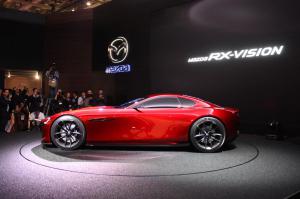 On October 27th, rumors were circulating wildly around the Internet that Mazda would unveil a concept vehicle at the 2015 Tokyo Motor Show that would signal their return to rotary engine production. At 7:30 PM EST, rotary fans around the world rejoiced as Mazda President and CEO Masamichi Kogai confirmed that under the hood of their concept car was “our next generation rotary engine, the SKYACTIV-R.” The last rotary engine car, the RX-8, had gone out of production in 2012. Since the RX8’s departure, no production vehicle had been equipped with any type of rotary engine.
On October 27th, rumors were circulating wildly around the Internet that Mazda would unveil a concept vehicle at the 2015 Tokyo Motor Show that would signal their return to rotary engine production. At 7:30 PM EST, rotary fans around the world rejoiced as Mazda President and CEO Masamichi Kogai confirmed that under the hood of their concept car was “our next generation rotary engine, the SKYACTIV-R.” The last rotary engine car, the RX-8, had gone out of production in 2012. Since the RX8’s departure, no production vehicle had been equipped with any type of rotary engine.
Many automakers have experimented with implementing the rotary engine, beginning with NSU and Mazda in the early 1960s, then later General Motors and Mercedes Benz in the early 1970s. It was Mazda that persevered the longest of all, becoming the only automaker to successfully mass produce the rotary engine from 1967 until 2012. In recognition of Mazda’s recommitment to rotary engine development, we’ve created a timeline of its lives, deaths and rebirths.
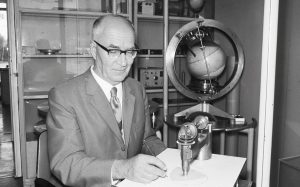
Felix Wankel (1902-1988) received his first patent for a piston-less internal combustion engine in 1929. Wankel, who became fascinated with internal combustion engines at an early age, had begun developing his rotary engine concept as early as 1924. He had a dream of developing “a new type of engine” that would combine the best attributes of piston engines and turbines.
1951: The Rotary Runs
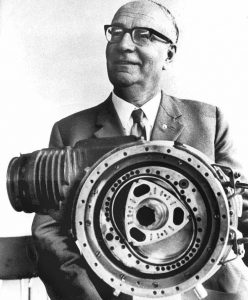 NSU Motorenwerke AG, a German automaker that was later acquired by Volkswagen Group and merged into what became Audi, began development of the rotary engine in 1951. Felix Wankel had signed a consulting agreement with NSU and designed their first working prototype; the DKM 54 (pictured right). The DKM first ran in February of 1957. A second prototype engine, the KKM 57, was also developed at NSU by engineer Hanns Dieter Paschke. This engine was a radical departure from Wankel’s original concept and was built without his knowledge. It was this design that was adopted by NSU for automotive applications due to its superior low speed operation and serviceability.
NSU Motorenwerke AG, a German automaker that was later acquired by Volkswagen Group and merged into what became Audi, began development of the rotary engine in 1951. Felix Wankel had signed a consulting agreement with NSU and designed their first working prototype; the DKM 54 (pictured right). The DKM first ran in February of 1957. A second prototype engine, the KKM 57, was also developed at NSU by engineer Hanns Dieter Paschke. This engine was a radical departure from Wankel’s original concept and was built without his knowledge. It was this design that was adopted by NSU for automotive applications due to its superior low speed operation and serviceability.
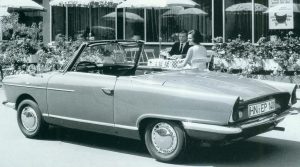
NSU introduced the world’s first rotary powered car, the Spider (pictured above) in 1964. Mazda would introduce their own rotary powered car, the Cosmo, three years later. Mazda had reached a licensing agreement with NSU in 1961 to conduct their own rotary engine development. Mazda President, Tsuneji Matsuda, was seeking an identity for his small but growing company. After hearing of NSU’s work on the rotary engine concept, he felt its distinct design and mechanical elegance was just what Mazda needed to stand out.
1974: GM Pulls the Plug
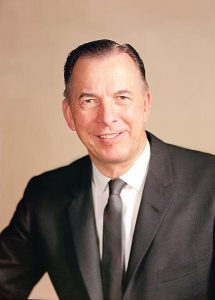 General Motors was among the numerous automakers that sought to develop their own rotary engines during the 1970s. After the legislation of the Clean Air Act in 1970, GM’s interest in the rotary lay in its low Nitrogen Oxide emissions compared to conventional piston engines. Automotive Hall of Fame inductee Ed Cole(pictured right), then GM President, oversaw GM’s rotary development. GM produced test engines that ran for 500,000 miles with minimal wear, and the program was showing promise.
General Motors was among the numerous automakers that sought to develop their own rotary engines during the 1970s. After the legislation of the Clean Air Act in 1970, GM’s interest in the rotary lay in its low Nitrogen Oxide emissions compared to conventional piston engines. Automotive Hall of Fame inductee Ed Cole(pictured right), then GM President, oversaw GM’s rotary development. GM produced test engines that ran for 500,000 miles with minimal wear, and the program was showing promise.
Their release was projected for 1975 model year, however, design revisions to improve fuel economy while still meeting emissions standards caused the engine’s reliability to deteriorate. Engineers worked around the clock to come up with a solution but to no avail. In September of 1974, Cole officially postponed the introduction of GM’s rotary engine. He retired the same month. His successor, Pete Estes, showed little interest in continuing development of the engine. General Motors’ abandonment of the rotary became a big problem for American Motors, which had agreed to purchase rotary engines from GM for their Pacer. AMC was left with no choice but to adapt one of their inline six engines for the Pacer.
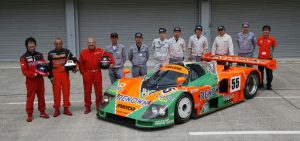
After the desertion of the rotary engine by every other automaker, Mazda soldiered on as the sole manufacturer of rotary powered vehicles. Mazda would produce the first electronically fuel injected and turbocharged rotary engines as well as the first three rotor engine. Their most iconic rotary powered sports car, the RX-7, was introduced in 1979. Over the next 23 years it would become the longest lived rotary production car. The rotary’s zenith came in 1991 when Mazda became the first Japanese manufacturer to achieve an overall win at the 24 hours of Le Mans, becoming the first to do so with a non-piston engine. Mazda’s winning car, the 787B (pictured above along with the 1991 team) was powered by a 4 rotor 2.6 liter “R26B” engine producing 700 hp.

Despite Mazda’s fanatical devotion to the rotary, even they could not keep it alive. The RX-7, Mazda’s most revered rotary powered sports car, went out of production in 2002. It was succeeded by the RX-8 in 2003, which featured a RENESIS rotary engine, a new design that aimed to improve fuel economy and reduce particulate emissions, two of the rotary engine’s most notorious nemeses. Initial reception was favorable, but fuel economy that was still comparably poor and a lack of power compared to the previous RX-7 caused sales of the RX-8 to dwindle. The final nail in the coffin was when the RENESIS engine failed to meet Euro 5 emission standards. Mazda ceased production of the RX-8 in 2012, ending 45 years of rotary production.
After the death of the RX-8, rumors circulated for years confirming and condemning the rebirth of the rotary engine. Mazda would neither confirm nor deny these rumors, and many believed that the rotary was truly dead. Some automakers, including Audi, experimented with the rotary engine in combination with a hybrid powertrain. In early October, Mazda released a sketch of a concept car that was to debut at the upcoming Tokyo Motor Show. The vehicle’s shape, which evoked memories of the departed RX-7, renewed hope that this may be the announcement of the rotary’s return. When the cover came off the concept, it was confirmed that this vehicle, dubbed the RX-Vision, was Mazda’s attempt at another rotary revival.